
Some major events and developments have taken place in the past week in the Colorado river water shortage arena. As a result, we are entering into a series of substantial and complicated legal aspects associated with the Colorado River situation. Thus, a brief review of the current situation and some basic legal points of consideration can perhaps clarify some of the present challenges.
In November 2022 the Bureau of Reclamation (BoR) published a Notice of Intent (NOI) to analyze and prepare for the Supplemental Environmental Impact Statement (SEIS) regarding the “Colorado River Interim Guidelines for Lower Basin Shortages and Coordinated Operations for Lake Powell and Lake Mead” to deal with the continuing drought conditions. Since the NOI was published, representatives from the Colorado River Basin States have been meeting and working together to develop a joint Framework and Agreement Alternative and they set a target date of 1 February 2023 to submit a proposal to the BoR.
Unfortunately, the seven U.S. basin states have not been able to reach a consensus. However, six basin states, including Arizona, submitted a proposal to the BoR (1). California was not part of the six-basin state agreement and so they submitted an independent proposal for the BoR’s consideration, modeling, and analysis (2).
Now after the 1 February deadline has passed and an agreement could not be reached among all seven U.S. basin states, two sharply contrasting proposals exist.
The proposal submitted by Arizona, Colorado, New Mexico, Nevada, Utah, and Wyoming addresses a large part of the reductions of Colorado River water allocations that the BoR has targeted (2-4 million acre-feet/year, MAF/yr) by accounting for system losses that include evaporation and other losses between Lake Mead and the Imperial Dam (approximately 1.5 MAF/yr). The calculations provided in this proposal result in large reductions for California due to its large share of the river water. This proposal also addresses reductions in Colorado River allocations more rapidly than the California proposal.
The six-state plan describes collective reductions of 250,000 acre-feet (KAF) when the Lake Mead reservoir level drops to an elevation of 1,030 feet and below. The 250 KAF total would consist of 93 KAF from Arizona, 10 KAF from Nevada, and 147 KAF from California.
An additional collective reduction of 200 KAF would come from these lower basin states if Lake Mead’s elevation plunged to 1,020 feet and below.
For perspective, Lake Mead is currently at an elevation of 1,046.97 feet.
In contrast, the California proposal is heavily based on the “Law of the River” and the high-priority senior water rights of the Golden State
The current California position is consistent with earlier proposals that they have provided with an emphasis on “present perfected rights, PPRs”, their interpretation of the Law of the River, and their offer to conserve an additional 400 KAF/year through 2026. The California proposal also includes voluntary cuts of 560 KAF from Arizona and 40 KAF from Nevada. As I interpret the California proposal, I find the “voluntary” reductions from Arizona and Nevada as an interesting feature.
The California proposal also includes considerations of Lake Powell water levels and additional reductions if the elevations of that reservoir were to drop further.
What we have now is California operating alone with an argument based heavily on their interpretation of the Law of the River in contrast to the united front and a different approach to the problem presented by the six other U.S. basin states.
To understand the complexities of the current situation, some basic understanding of what the “Law of River” is, and the possible implications is important. In general, the “Law of the River” is a collection of laws, agreements, court decisions, and contracts. The Law of the River is a complex amalgam based on a series of federal laws specific to the Colorado River in combination with a series of United States Supreme Court decrees that serve to enjoin the Secretary of the Interior and the States of the Lower Division (Arizona, California, and Nevada) to a precise allocation of the water passing downriver from Hoover Dam (3, Glennon and Pearce, 2007).
Within the lower basin states there are three means by which water is allocated. First, is the allocation of water to the holder of a “present-perfected right, PPR”, consistent with a United States Supreme Court decree. The second method of water allocation is to the holder of a contract issued by the BoR under Section 5 of the Boulder Canyon Project Act of 1928. The third method of Colorado River water allocation is to the holder of a subcontract from a Section 5 contract holder (3, Glennon and Pearce, 2007).
The “present perfected rights PPRs” is an important aspect of the Law of the River. The PPRs are those rights to use Colorado River water that were acquired or “perfected” by prior appropriation under state law before the Boulder Canyon Project Act of 1928 was passed.
For further delineation of water rights on the Colorado River, the BoR has established a priority ranking of water rights to administer diversions from the river on a “first-intime-first-in-right” basis.
Priority 1 consists of present perfected rights established by the decree.
Priority 2 is for federal enclaves and reserved water rights established or effective before September 30, 1968.
Priority 3 is for Section 5 contracts issued before 30 September 1968.
Priority 4 is a complex priority, consisting of (a) Section 5 contracts issued after 30 September 1968 (in a total amount not to exceed 164,652 acre-feet of annual diversions) and (b) Contract No. 14-06-W-245 issued to the Central Arizona Water Conservation District.
Priority 5 is for water within Arizona’s 2.8 MAF allocation under the decree, but not currently being used by a right holder.
Priority 6 is for Arizona’s share of any surplus allocation released by the Secretary of the Interior pursuant to the power vested in the Secretary by Article II(B)(2) of the decree. (3, Glennon and Pearce, 2007)
Most of the present perfected rights and Section 5 contracts issued before 1968 were for agricultural purposes along the mainstem of the Colorado River. Many of the Priority 4 contracts were issued to irrigation districts that were specifically formed to divert water for agricultural use. Accordingly, agricultural diversions represent 70-80% of total diversions on the Colorado River basin.
A map and general delineation of the Yuma-area irrigation districts and priority categories is shown in Figure 1.
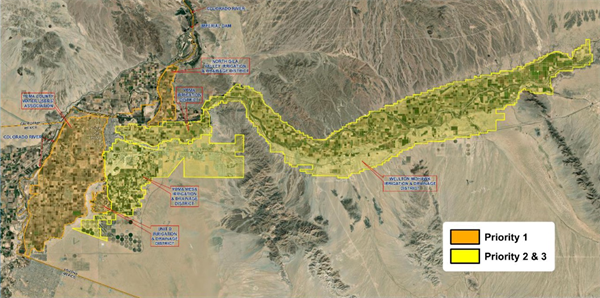
Figure 1. Map and delineation of the Yuma-area irrigation districts with priority
categories. Source: Yuma-area irrigation district coalition.
For the past several decades there has been increasing demand for Colorado River water for municipal and industrial (M&I) purposes, aka urban development. This has been accentuated by the rapidly growing populations of Arizona and other basin states and now compounded by the mega-drought that we have been experiencing for the 23 years.
The present situation on the Colorado River is both extremely complex and urgent. We are dealing with a real test of our system of governance, natural resource management, and our ability to deal with these challenges effectively.
While the basin states seem to be at an impasse, something and someone must give and there will be significant difficulties encountered as a result. This is a rapidly changing situation, and it will have a significant impact on agriculture in the lower Colorado River basin.
For the past several decades there has been increasing demand for Colorado River water for municipal and industrial (M&I) purposes, aka urban development. This has been accentuated by the rapidly growing populations of Arizona and other basin states and now compounded by the mega-drought that we have been experiencing for the 23 years.
The present situation on the Colorado River is both extremely complex and urgent. We are dealing with a real test of our system of governance, natural resource management, and our ability to deal with these challenges effectively.
While the basin states seem to be at an impasse, something and someone must give and there will be significant difficulties encountered as a result. This is a rapidly changing situation, and it will have a significant impact on agriculture in the lower Colorado River basin.
References
Frost and freeze damage affect countless fruit and vegetable growers leading to yield losses and occasionally the loss of the entire crop. Frost damage occurs when the temperature briefly dips below freezing (32°F).With a frost, the water within plant tissue may or may not actually freeze, depending on other conditions. A frost becomes a freeze event when ice forms within and between the cell walls of plant tissue. When this occurs, water expands and can burst cell walls. Symptoms of frost damage on vegetables include brown or blackening of plant tissues, dropping of leaves and flowers, translucent limp leaves, and cracking of the fruit. Symptoms are usually vegetable specific and vary depending on the hardiness of the crop and lowest temperature reached. A lot of times frost injury is followed by secondary infection by bacteria or opportunist fungi confusing with plant disease.
Most susceptible to frost and freezing injury: Asparagus, snap beans, Cucumbers, eggplant, lemons, lettuce, limes, okra, peppers, sweet potato
Moderately susceptible to frost and freezing injury: Broccoli, Carrots, Cauliflower, Celery, Grapefruit, Grapes, Oranges, Parsley, Radish, Spinach, Squash
Least susceptible to frost and freezing injury: Brussels sprouts, Cabbage, Dates, Kale, Kohlrabi, Parsnips, Turnips, Beets
More information:
Last month, we investigated the use of applying steam to the soil to control weeds in baby leaf spinach. In the study, we utilized the prototype steam applicator described in previous UA Veg IPM articles to inject steam into the soil prior to planting. The concept is to heat the soil to levels sufficient to kill soilborne pathogens and weed seeds (140 °F > 20 minutes). The device is principally comprised of a 35 BHP steam generator mounted on an elongated bed shaper (Fig. 1). The apparatus applies steam via shank injection and from cone shaped ports on top of the bed shaper. After cooling (<1 day), the crop is planted into the disinfested soil.
In the trial, the unit was configured so that one of the unit’s narrow-bed bed shapers (42” wide) was outfitted with fourteen steam injection shanks positioned to inject steam in the soil at a depth of about 2” (Fig. 2). Seven of the injectors were in a rank towards the front of the bed shaper with each injector spaced about 3.5” apart. A second rank of 7 injectors, also spaced 3.5” apart, was positioned in-line with the first rank towards the rear of the bed shaper. The steam applicator was underpowered to treat the entire 22” wide bedtop as the machine was designed to treat two, 4” wide bands of soil (8” total). As a consequence, travel speed was slow, 0.15 mph, to ensure target temperatures were met.
Results showed that steam treatment provided outstanding weed control of nearly 100% (Table 1, Fig. 3). The predominant species at the site were nettleleaf goosefoot and common purslane. This is a very impressive result however work rates were low (0.05 ac/hr) and fuel use/cost was high ($1,000/ac).
This was our first trial investigating the use of soil applied steam to control weeds in high density crops and think these operational parameters can be significantly improved. As stated previously, the unit was equipped with a steam generator with insufficient steam generation capacity. Equipping the device with a higher powered steam generator so that two beds can be treated at the same time would double the work rate. Also, steam was injected at a depth of 2” and at a travel speed was such that the amount of steam applied was adequate to control essentially all (100%) of the weeds. It is logical that shallower treatment depths and faster travel speeds could be utilized and still provide adequate control. Finally, it is estimated that travel speed can be at least doubled by operating the device when initial soil temperatures are high (>120 °F) as compared to this study where soil temperatures were relatively low (90 °F) since much less heat energy is needed to raise soil temperatures to target levels. If travel speed were doubled and two beds were treated during a pass, work rate would be improved to 0.21 ac/hr and fuel costs would be about $500/ac. These numbers are much more reasonable and show potential if high levels of weed control can be maintained. Over the next couple of months and throughout the summer, we plan to investigate these and other ways to improve the efficiency of steam application.
Acknowledgements
This work is supported by the Arizona Specialty Crop Block Grant Program and the Crop Production and Pest Management grant no. 2021-70006-35761 /project accession no. 1027435 from USDA-NIFA. We appreciate their support. Any opinions, findings, conclusions, or recommendations expressed in this publication are those of the author(s) and do not necessarily reflect the view of the U.S. Department of Agriculture.
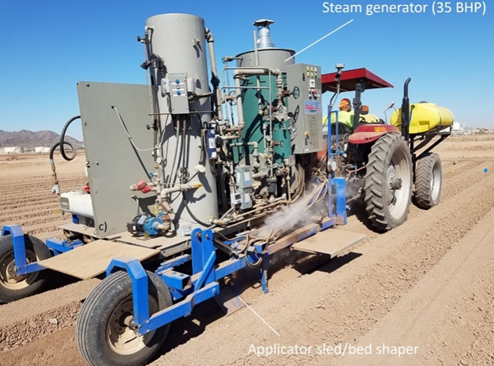
Fig. 1. Band-steam applicator principally comprising a 35 BHP steam generator mounted on a bed-shaper applicator sled.
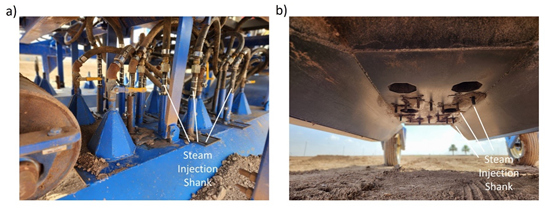
Fig. 2. Steam applicator sled a) top view and b) bottom view.
|
Table 1. Weed density and control with steam in baby leaf spinach trial. |
||
|
Treatment |
Weed Density |
Weed Control |
|
|
(#/ft2) |
(%) |
|
Steam |
0.05 |
99.4 |
|
Untreated |
8.23 |
--- |

Fig. 3. Weed control with steam in spinach. Steam was applied to the soil at a 2” depth via shank injection prior to planting (a) and untreated control (b).
What is the difference between resistance to herbicide and tolerance? Sometimes we use the terms inconsistently or interchangeably. For example, some manufacturers of transgenic varieties refer to them as herbicide-tolerant entities and other authors refer to them as resistant-varieties.
The WSSA (1998) helped us define this concept:
Tolerance is the “inherent ability of a species to reproduce and survive after herbicide treatment”. This means no selection or genetic manipulation occurred to create it, the plant is “naturally tolerant”. Some weeds are pulled around to some herbicides due to morphological, physiological, and genetic plant characteristics.
Resistance is the “ability of a plant to survive and reproduce following an exposure to an herbicide dose that is normally lethal to the wild type” of that species1. Resistant weeds appear due to genetic selection by herbicide over a period of time. This usually take several lifecycles.
We are evaluating some fields at the Yuma Mesa in Yuma, AZ for possible Pigweed (Amaranthus palmeri) resistance to glyphosate. In one case after the application of glyphosate we can see dead plants as well as perfectly healthy plants next to each other, which indicates the presence of resistant individuals. In other case plants do not show symptoms of herbicide activity except when applying an extremely high rate (8x) of glyphosate.
It is very important to examine the field history. For instance, if the field is coming from citrus and only glyphosate was used frequently it is possible you inherited the problem of weed resistance. Will continue with our evaluations and keep you informed of our findings.
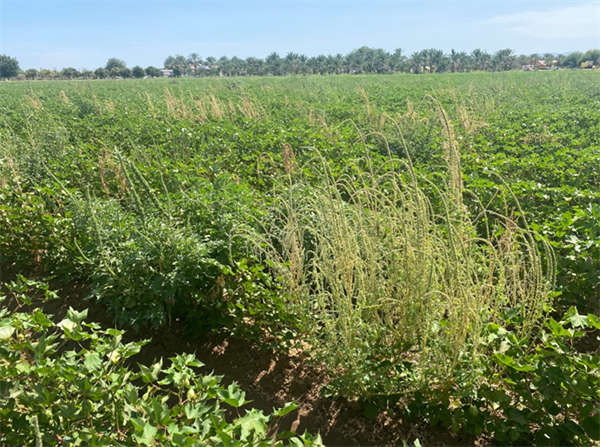
Figure 1. Susceptible and Non-Susceptible Pigweed (Amaranthus palmeri) after
glyphosate application.
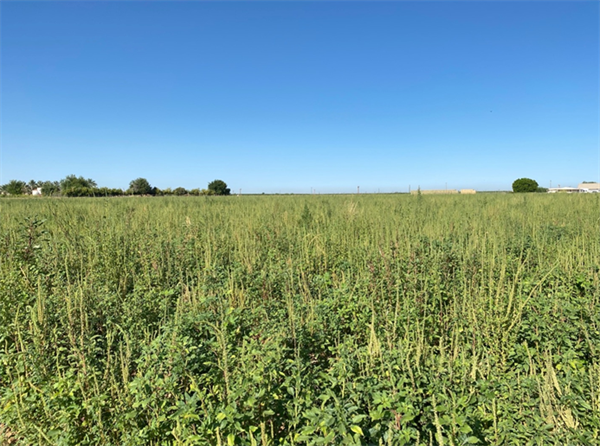
Figure 2. Pigweed (Amaranthus palmeri) population not showing symptoms
after glyphosate application.
Reference:
Results of pheromone and sticky trap catches can be viewed here.
Corn earworm: CEW moth counts remain at low levels in all areas, well below average for this time of year.
Beet armyworm: Trap increased areawide; above average compared to previous years.
Cabbage looper: Cabbage looper counts decreased in all areas; below average for this time of season.
Diamondback moth: DBM moth counts decreased in most areas. About average for this time of the year.
Whitefly: Adult movement beginning at low levels, average for early spring.
Thrips: Thrips adult counts reached their peak for the season. Above average compared with previous years.
Aphids: Aphid movement decreased in all areas; below average for late-March.
Leafminers: Adults remain low in most locations, below average for March.